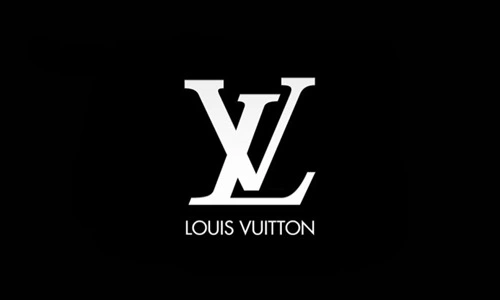Louis Vuitton, a cornerstone of the luxury goods market, is renowned for its iconic monogram, craftsmanship, and high-end fashion products. Established in 1854, Louis Vuitton has grown into a global brand synonymous with elegance, luxury, and exclusivity. As part of the LVMH group, it benefits from a wealth of resources and expertise in the luxury sector. This SWOT analysis explores Louis Vuitton’s current position in 2024, assessing its strengths, weaknesses, opportunities, and threats as it continues to navigate the ever-changing fashion industry.

Current Overview of Louis Vuitton
Louis Vuitton maintains its position as a leading luxury brand with a global presence across more than 50 countries. The brand’s diverse product portfolio, ranging from leather goods and ready-to-wear fashion to jewelry and fragrances, continues to appeal to a wide spectrum of high-end consumers. As of 2024, Louis Vuitton’s revenue contributes significantly to LVMH’s total earnings, which exceeded €79 billion in 2022. The company continues to leverage its strong brand equity and extensive retail presence to attract luxury buyers globally.
Strengths
1. Strong Brand Recognition: Louis Vuitton is one of the most recognizable luxury brands worldwide, with its signature monogram and craftsmanship symbolizing status and exclusivity. This has contributed to a highly loyal customer base.
2. Diverse Product Offerings: Louis Vuitton offers a wide range of products, including handbags, shoes, apparel, and accessories, which diversifies its revenue streams and reduces dependence on any single category.
3. Parent Company Support: As part of LVMH, Louis Vuitton benefits from substantial financial backing, global reach, and strategic support, allowing it to expand into new markets and invest in innovation.
4. Commitment to Innovation: Louis Vuitton continually reinvents its collections, collaborating with designers and artists to keep its offerings fresh and relevant in a highly competitive market.
5. Sustainability Initiatives: The brand is increasingly focused on eco-friendly practices, such as responsible sourcing of materials and reducing its environmental impact, which resonates with environmentally conscious consumers.
Weaknesses
1. High Pricing: Louis Vuitton’s premium pricing strategy limits its accessibility to a broader audience. The high entry point could alienate younger demographics, such as millennials and Gen Z, who are becoming an important customer segment.
2. Counterfeiting Issues: Louis Vuitton is one of the most counterfeited luxury brands globally. The proliferation of fake goods dilutes its exclusivity and can lead to a loss of revenue and brand equity.
3. Dependence on Key Markets: The brand relies heavily on sales in mature markets like Europe, the U.S., and Asia. Any economic downturns or political instability in these regions can negatively affect the company’s financial performance.
4. Limited Product Diversification: While Louis Vuitton excels in its core categories, it has limited presence in emerging sectors like tech accessories or home decor, which could restrict growth opportunities in newer markets.
Opportunities
1. Expansion into Emerging Markets: The growing demand for luxury goods in emerging markets such as India, Latin America, and Africa presents a significant opportunity for Louis Vuitton to expand its global footprint and attract new consumers.
2. Digital Growth and E-commerce: The rise of online shopping offers Louis Vuitton a chance to strengthen its e-commerce platform. By investing in digital marketing, virtual shopping experiences, and omnichannel strategies, the brand can attract tech-savvy customers globally.
3. Sustainable Fashion: The increasing consumer demand for sustainable and ethically produced luxury goods presents an opportunity for Louis Vuitton to position itself as a leader in sustainable luxury. The brand can expand its use of eco-friendly materials and promote circular fashion initiatives.
4. Product Diversification and Customization: Offering more personalized products and expanding into new categories, such as home decor or tech, can help Louis Vuitton capture a broader market. Customization options can further enhance exclusivity and customer loyalty.
Threats
1. Intense Competition: Louis Vuitton faces fierce competition from other luxury brands like Gucci, Chanel, and Prada. Maintaining market share in such a competitive industry requires constant innovation and effective marketing.
2. Economic Downturns: The luxury market is sensitive to economic cycles. Any global financial crisis or economic slowdown could reduce consumer spending on high-end goods, directly impacting Louis Vuitton’s revenues.
3. Counterfeit Products: The widespread availability of counterfeit Louis Vuitton products remains a significant threat, not only in terms of lost sales but also in diluting the brand’s exclusive image.
4. Supply Chain Challenges: The brand’s reliance on a complex and specialized supply chain exposes it to potential disruptions, which can affect production timelines and product availability.
Conclusion
In 2024, Louis Vuitton stands as a leader in the global luxury market, bolstered by its strong brand identity, innovative designs, and extensive product offerings. However, challenges such as economic uncertainties, counterfeiting, and increasing competition require careful navigation. To remain at the forefront of the luxury industry, Louis Vuitton must continue to adapt by expanding into new markets, embracing digital transformation, and prioritizing sustainability. By leveraging its strengths and capitalizing on emerging opportunities, Louis Vuitton is well-positioned to sustain its growth and maintain its status as a premier luxury brand.